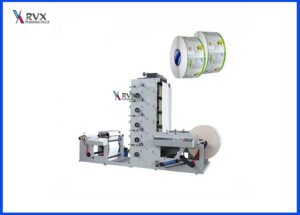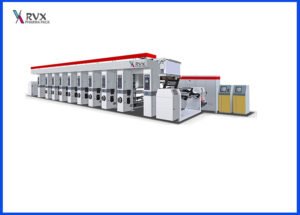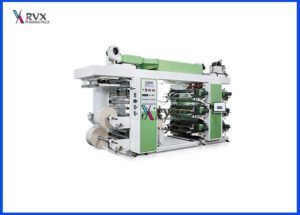Alu Alu foil printing machines play a crucial role in the pharmaceutical packaging industry, as well as in food and beverage packaging, cosmetics, and other sectors. These machines ensure that vital information such as product details, manufacturing dates, batch numbers, and usage instructions are accurately printed on the aluminium foil. This article delves into the operational principles of alu alu foil printing machine, examines different types of equipment, and discusses their respective advantages and disadvantages.
Operational Principles of Alu Alu Foil Printing Machines
PART:1
Alu Alu foil printing machine operate through a series of coordinated steps designed to transfer ink onto the foil surface with precision. The primary steps in the printing process include:
- Preparation and Loading
Special inks designed for alu alu foil are prepared and loaded into the machine. These inks must be able to adhere to the non-porous surface of the foil and withstand subsequent processes like heat sealing and sterilization.
- Foil Feeding
The aluminium foil is fed into the machine from a roll. The feeding system ensures a continuous and smooth supply of foil, maintaining tension to prevent wrinkles and misalignment.
- Printing
The core of the operation involves the actual printing process. Various printing technologies can be employed, such as flexographic, gravure, and offset printing. Each technology utilizes a different method for transferring ink from the printing plate or cylinder to the foil.
- Drying and Curing
After the ink is applied, it must be dried or cured to ensure it adheres properly to the foil. This is typically achieved using UV lamps or hot air dryers, depending on the type of ink used.
- Quality Control
Advanced sensors and cameras are often integrated into the machine to monitor print quality in real-time. Any defects or misprints can be detected and corrected immediately to ensure high-quality output.
6.Rewinding and Cutting
The printed foil is then rewound onto a roll or cut into sheets, depending on the intended use. This step requires precision to maintain alignment and prevent damage to the printed material.
PART:2
Types of Alu Alu Foil Printing Machine
①. Flexographic Printing Machines
Operation– Utilizes flexible photopolymer plates mounted on rotating cylinders. The ink is transferred from the ink reservoir to the plate and then onto the foil.
Advantage– High-speed printing, cost-effective for large runs, capable of printing on various substrates.
Disadvantages-Limited print resolution compared to other methods, requires more frequent plate changes for different designs.
Operation-Uses engraved cylinders where ink fills the engraved cells and is transferred to the foil. Excess ink is removed by a doctor blade.
Advantages– Excellent print quality and consistency, ideal for high-volume printing with intricate designs.
Disadvantages– High initial setup costs due to the engraving of cylinders, less economical for short runs.
Operation-Involves transferring ink from a plate to a rubber blanket, then onto the foil. This indirect method helps protect the foil from direct contact with the plate.
Advantages-High-quality prints with sharp details, versatile for various designs and adjustments.
Disadvantages-More complex setup and maintenance, slower than flexographic and gravure printing for high volumes.
PART:3
Advantages and Disadvantages of Alu Alu Foil Printing Machines
Advantages
⑴Capable of producing high-resolution images and text, essential for clear and legible packaging.
⑵Suitable for various applications beyond pharmaceuticals, including food packaging, cosmetics, and industrial products.
⑶Modern machines offer easy customization and quick changeovers, beneficial for short runs and personalized packaging.
⑷Printed aluminium foil is resistant to moisture, chemicals, and physical damage, ensuring long-lasting information on packaging.
Disadvantages
⑴High initial investment for sophisticated printing machines, particularly gravure and offset types.
⑵ Requires skilled operators and regular maintenance to ensure optimal performance.
⑶ Ink and solvent usage can have environmental impacts, necessitating proper handling and disposal procedures.
PART:4
Conclusion
Alu Alu foil printing machines are indispensable in the packaging industry, providing essential labeling and branding solutions. Understanding the different types of machines and their operational principles helps in selecting the appropriate equipment based on specific production needs. While each type has its unique advantages and disadvantages, advancements in technology continue to enhance the efficiency, quality, and versatility of aluminium foil printing, meeting the ever-evolving demands of the market.


